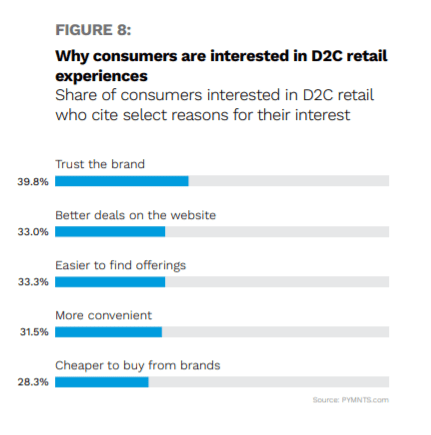Retailers No Longer Compete Against Each Other, But Against Amazon Marketplace

The COVID-19 crisis and the digital shift that it accelerated are making five lessons clear that tradition brick-and-mortar retailers must heed if they want to survive, according to Karen Webster. One key takeaway — traditional merchants’ biggest rivals these days aren’t other traditional merchants, but are online marketplaces like Amazon and Wayfair.
Failure to adapt to that reality won’t cut. For example, Webster noted in a recent analysis that Mastercard’s Spending Pulse data for holiday 2020 found that while department stores’ overall sales fell 10.2 percent during the season, their eCommerce sales only rose 3.3 percent.
In other words, department stores failed to migrate in-store customers to online channels, losing business to marketplaces and other eCommerce rivals instead.
Everyone From Amazon To Poshmark Is A Rival
The key lesson traditional merchants must learn is that “retail’s competition is the marketplace, not other category competitors,” Webster wrote.
She noted that the biggest competitor struggling department store chain Macy’s faces in the clothing and accessories segments these days “isn’t Kohl’s (market cap of $6 billion) or Ross Stores (market cap of $41 billion) or the specialty retailers that once lined the malls. It’s Amazon.”
For example, Webster wrote that recent PYMNTS analysis found Amazon enjoyed a 14.3 percent market share for all clothing and apparel sales during 2020’s third quarter versus just 9.5 percent a year earlier. By contrast, Walmart’s share of apparel fell to 7.4 percent during the same period, down from 10.5 percent a year earlier.
Similarly, Wayfair enjoyed 33.4 percent of the market for online furniture and household accessories in 2019 — a market share traditional furniture merchants would kill for.
Even local consignment stores and antique shops “no longer compete with each other for the supply of used clothing and accessories and the shoppers to buy them,” Webster noted. “Instead, they compete with online marketplaces like Tradesy, Poshmark, The RealReal, Chairish and 1stDibs.”
“In an online world where things are delivered to the doorstep, location is irrelevant,” she wrote. “Choice is in — and marketplaces are the most efficient way for a consumer to get items, completely unconstrained by the location of the product she wants to buy.”
Another Rival: D2C
Webster said the rise of direct-to-consumer (D2C) sales is adding an additional challenge to traditional retailers’ battle for relevance.
“Brands and products, not stores, will drive the search for the products consumers want to buy,” she wrote. “Going where the eyeballs and consumers are searching with an intent to buy can be an on-ramp for their own direct-to-consumer sales and brand-building, offering one set of experiences on a marketplace and a more personalized experience on their own D2C channels.”
PYMNTS’ recent How We Shop: Measuring the Rapid Digital Shift study, done in conjunction with PayPal, found a hefty 37 percent of U.S. consumers surveyed interested in direct-to-consumer sales. The No. 1 reason cited — loyalty to well-known brands:

Consider Nike, which began making an aggressive push into D2C well before COVID-19 and only accelerated its efforts when the health crisis pushed more and more consumers toward digital channels.
The shoe giant recently reported that digital sales of its flagship Nike brand (the firm also owns the Converse and Jordan brands) soared by 84 percent during the company’s fiscal third quarter. That included more than 100 percent digital sales growth in North America.
“We’ve now had three straight quarters of roughly 80 percent [worldwide] digital growth,” CEO John Donahoe, a former top eBay executive who joined Nike a year ago, told analysts. “This is the sharp point of our strategy. The consumer shift to digital is permanent, and our digital penetration will only increase in years to come.”
